

Matt Campbell
2025 Porsche 911 Carrera T review
5 Days Ago
The mid-range Carnival Si offers goodness in the right areas, including acres of space, a torquey and frugal diesel, and exceptional on-road manners.
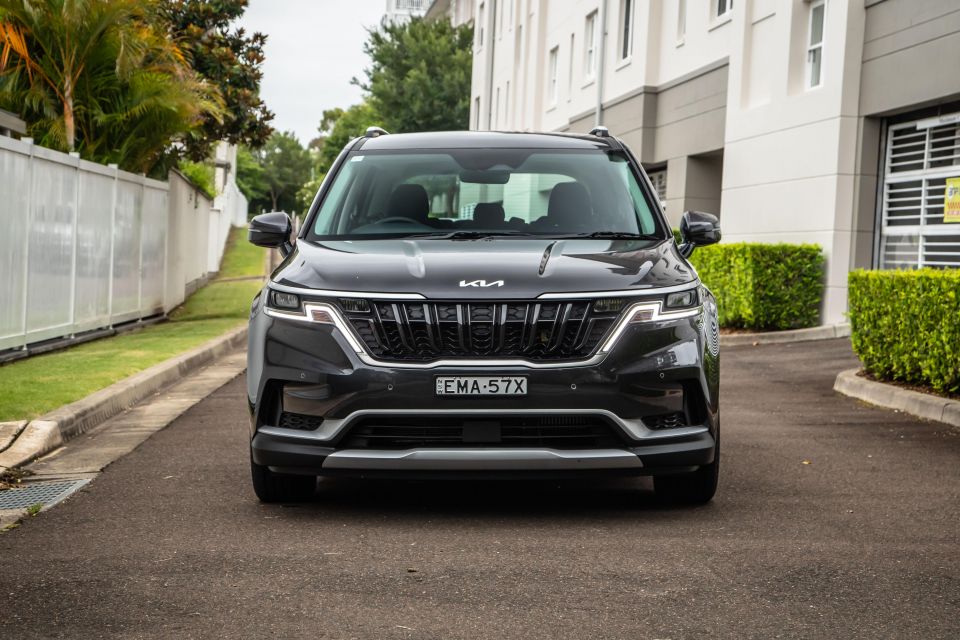
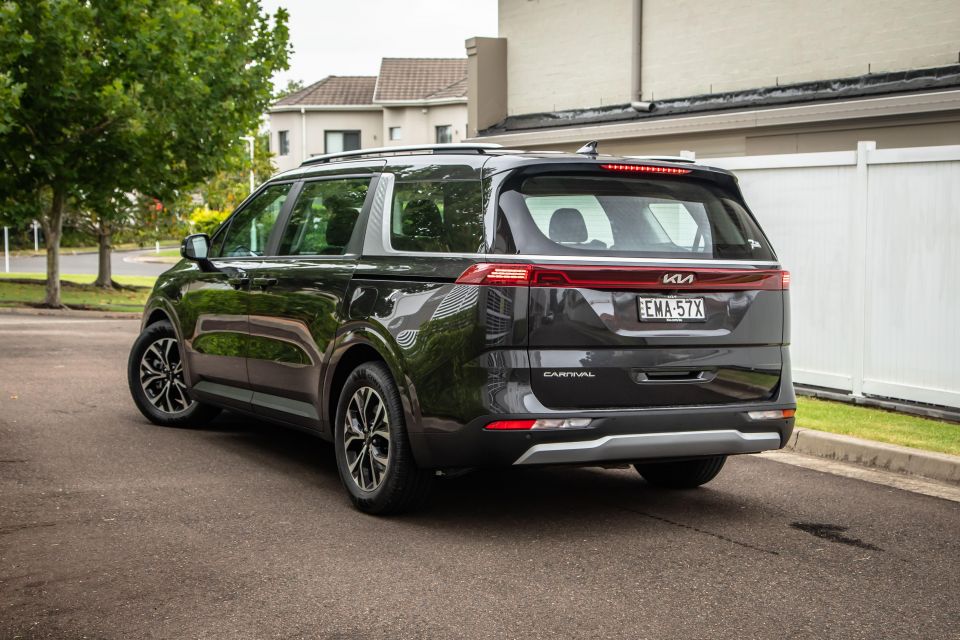

Quickly see how this car stacks up against its competition. Select any benchmark to see more details.
Where expert car reviews meet expert car buying – CarExpert gives you trusted advice, personalised service and real savings on your next new car.
A ‘GUV’ or ‘Grand Utility Vehicle’, is what Kia describes its Carnival people mover in some literature, but frankly, call this plus-sized family hauler what you will.
In a good many ways the Carnival is functionally an SUV, or at least largely serves the purpose that trendy (if categorically ‘washy’) sport utility vehicle label implies.
In fact, not only does Kia’s people mover fit the SUV requirement better than a good many hatch-based crossovers or soft-road-ish wagons, it’s arguably one of the best.

The Carnival is a van in that it offers sliding side doors, but then again it isn’t a van. What does this mean? You see this relatively new fourth-generation version is underpinned by the N3 platform shared with Kia’s own Sorento and Hyundai’s Santa Fe, both certifiably and undeniably SUVs. That said, the Hyundai Staria people mover and Staria Load commercial van ride on the same N3 architecture.
If you’re sensing this author is a fan, you’re right – and I’m not alone. Three other reviewers on the CarExpert roster have rated three Carnival variants to date, with two 8.7s and a ‘low’ of 8.4 out of ten, making the fourth-gen Carnival one of the highest-rating models on this site.
The gut feeling is this 2022 Kia Carnival Si Diesel ought to shine: mid-grade equipment to lift it out of the base model doldrums, an oiler engine that is inherently friendly on consumption and torque-laden enough to shift a loaded eight-seater without much struggle. So, let’s put it to the test.
The Si Diesel lists for $54,980 plus on-road costs, with a drive-away offer of $59,390 at the time of writing. That’s a little up on 12 months ago when the same version launched $600 lower on list price with a drive-away offer of $57,790.
There are four diesels in the Carnival line-up. Dropping down to the entry S, at $53,690 drive-away, saves $5700. Further up the tree, the SLi ($64,190 drive-away) demands an extra $4800, while the ultimate Platinum ($71,890 drive-away) pries $12,500 more out of your hip pocket compared with the Si.
Petrol? This comes at a $2k discount right throughout the four-variant range, pegging the diesel option as the premium choice. Five of the six available colours command a $695 premium.
Rivals? The Kia is closest in price to Hyundai’s base Staria diesel, at $51,500 list ($56,685 drive-away). Meanwhile, the mid-spec Staria Elite is at $59,500 ($64,596 drive-away) quite a bit pricier, though diesel versions of the Staria are all-wheel drive.
At the time of writing, Honda’s Odyssey Vi LX7 is in runout at $56,000 drive-away. Meanwhile, Toyota’s base Granvia diesel, in optional eight-seat guise, asks for $72,840 drive-away.


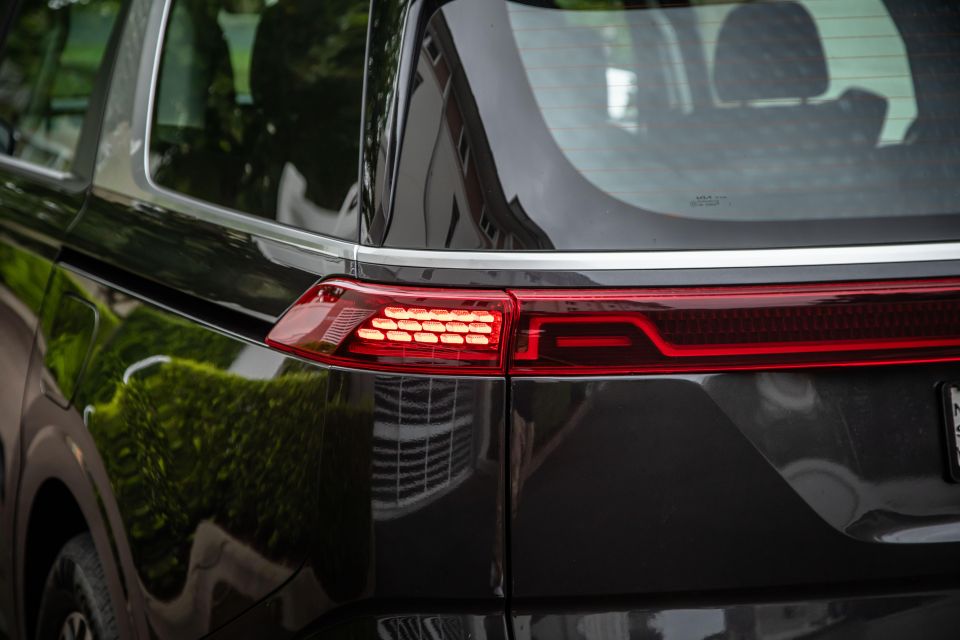
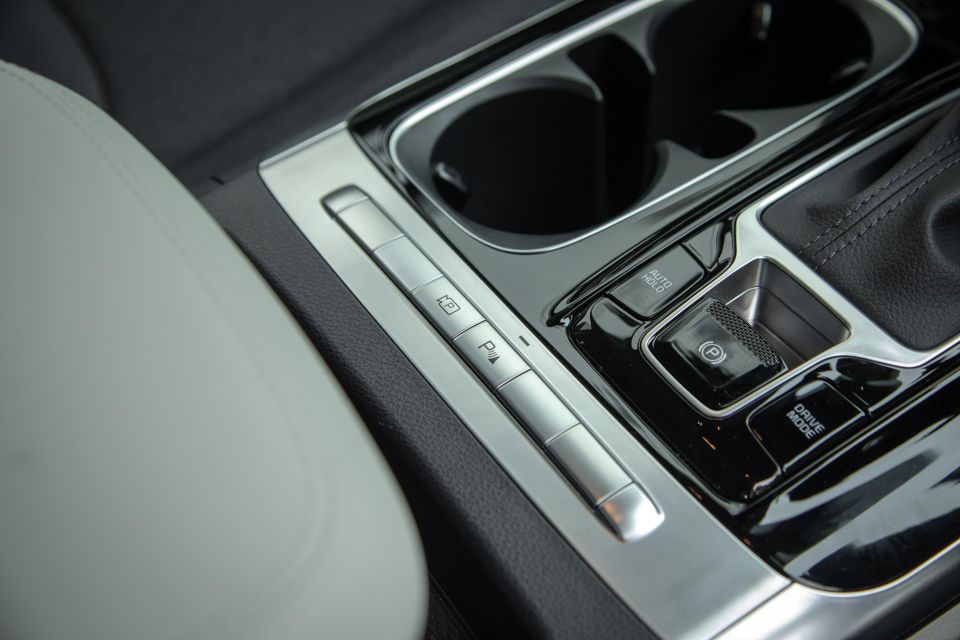
Carnival Si highlights:

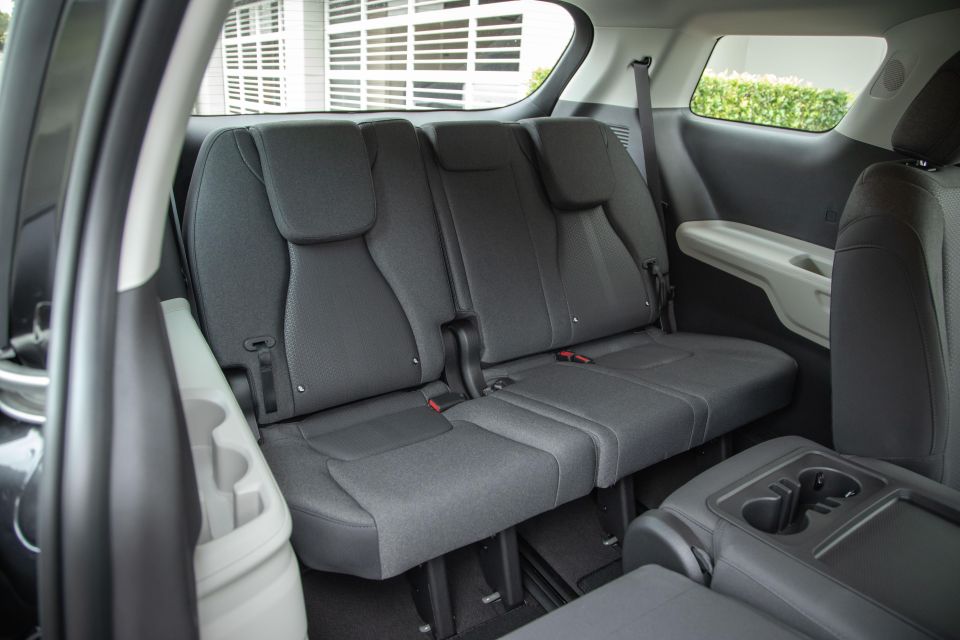
This is atop equipment fitted to the base S:
Unsurprisingly, the Si adds some key feel-good extras while still retaining a lot of basic features, such as cloth trim, mechanical seat adjustment, key barrel ignition and the like.
Auto wipers remains strangely absent from the 2022 line-up, together with the digital instrumentation offered in high-spec Carnivals in some other regions.
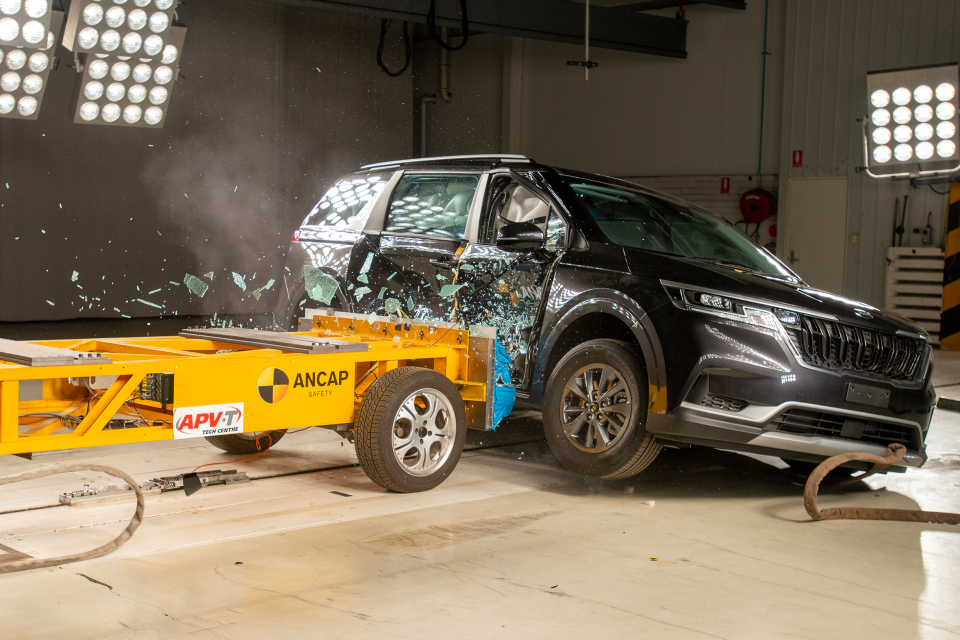
The Carnival range received a five-star ANCAP safety rating in January 2021.
It scored 90 per cent for adult occupant protection, 88 per cent for child occupant protection, with a 68 per cent and 82 per cent for vulnerable road user and safety assist respectively.
All Carnivals come standard with:
Absent from the Si but available in higher-grade SLi and Platinum variants are rear cross-traffic assist, which brakes the car and sounds a warning if it detects an imminent collision, as well as safe exit warning, which also locks the rear doors to prevent occupants from exiting into oncoming traffic.
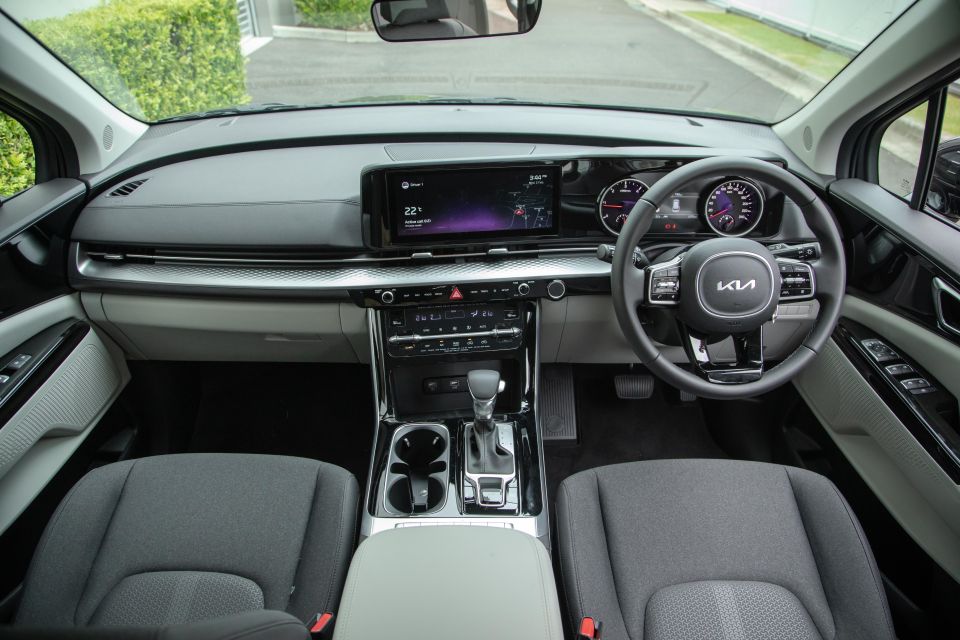
The first thing that strikes you about the car is how solid and hefty it feels. Large doors, lots of metal, a real sense of security in-cabin protecting you from the outside environment. There’s a quality vibe to Carnival.
The second and lasting impression is just how palatial and spacious it is. There’s wide separation between the front seats, a broad centre console and the neat and streamlined dash fascia is located far away enough to create a real ‘business class’ sense of space, while still locating control of infotainment and climate within easy reach.
It is at its core, excellent, and it’s unfussy and intuitive where it needs to be. Instrumentation clarity, large cupholders, logical central stack orientation, it’s all natural and welcoming. Further, the Si builds upon the S with feel-good niceties in key places to elevate presentation and vibe far enough above entry level… save perhaps for the key barrel ignition.
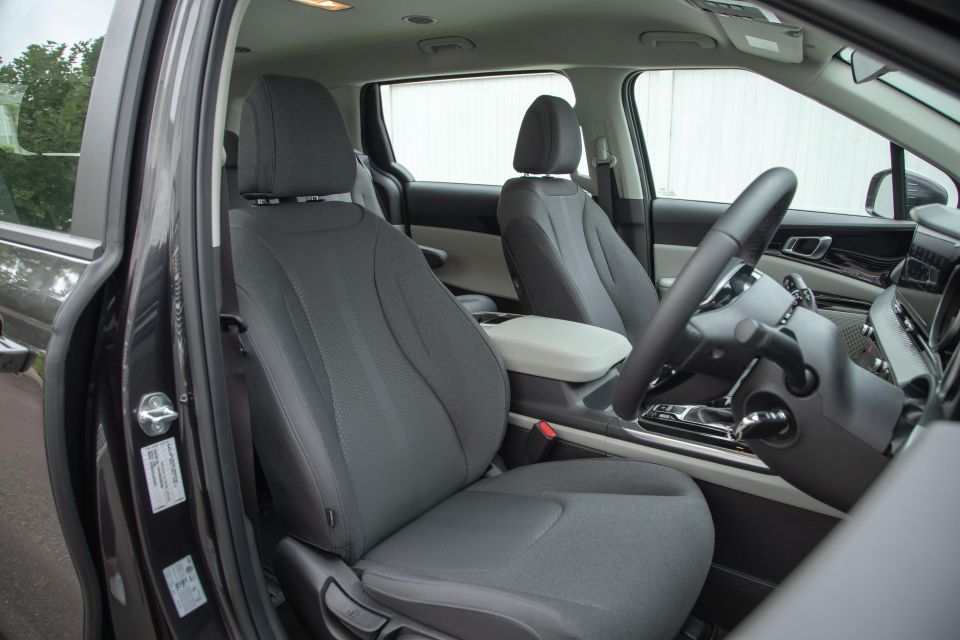


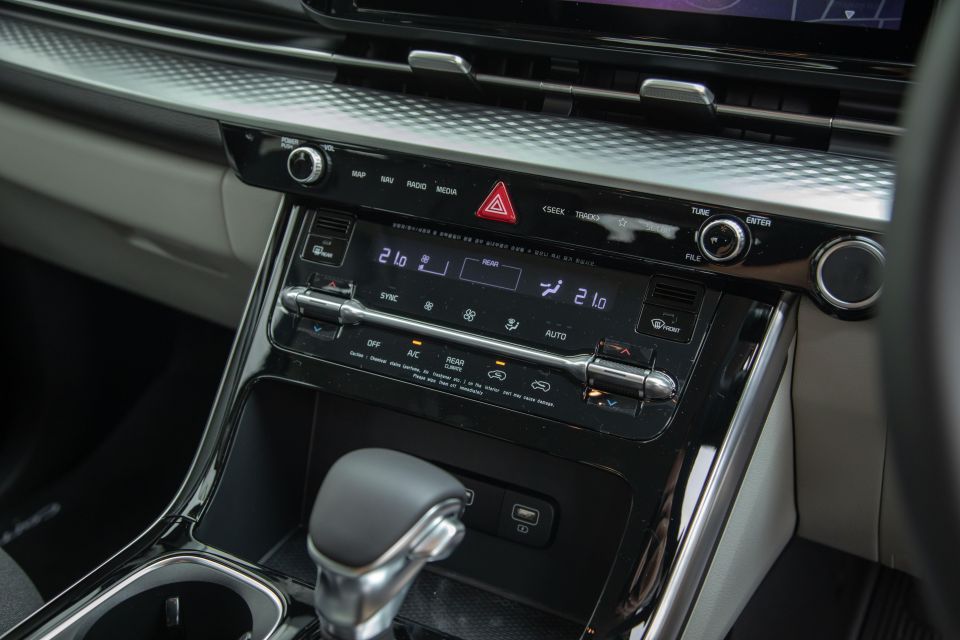
Those key upgrades include a large and fully featured 12.3-inch infotainment touchscreen that looks far more natural in the big Carnival cabin than the chintzy 8.0-inch unit in the lower-grade variant. There is also a high-grade leather trimmed wheel and shifter, neat and somewhat convincing metallic trim inlay work with a nice variety in applied materials, as well as dual-zone climate control.
Actually, the climate control is more accurately termed ‘multi-zone’ given the dedicated row-two ceiling-mounted adjustment panels. Overall, there’s quite a premium feel for what actually is in the lower end of the model range.
The only conspicuous cost-consciousness is the seating. The front pews are fully mechanical, trimmed in fairly rudimentary if not unwelcoming fabric, and if there’s a key criticism, it’s that the bases are a bit short and there could be a smidgen more height adjustability.
The seat contours, too, are good rather than outstanding. That said, there’s a huge amount of wheel height and reach adjustment and outward visibility is so generous that it is easy to feel comfortable.
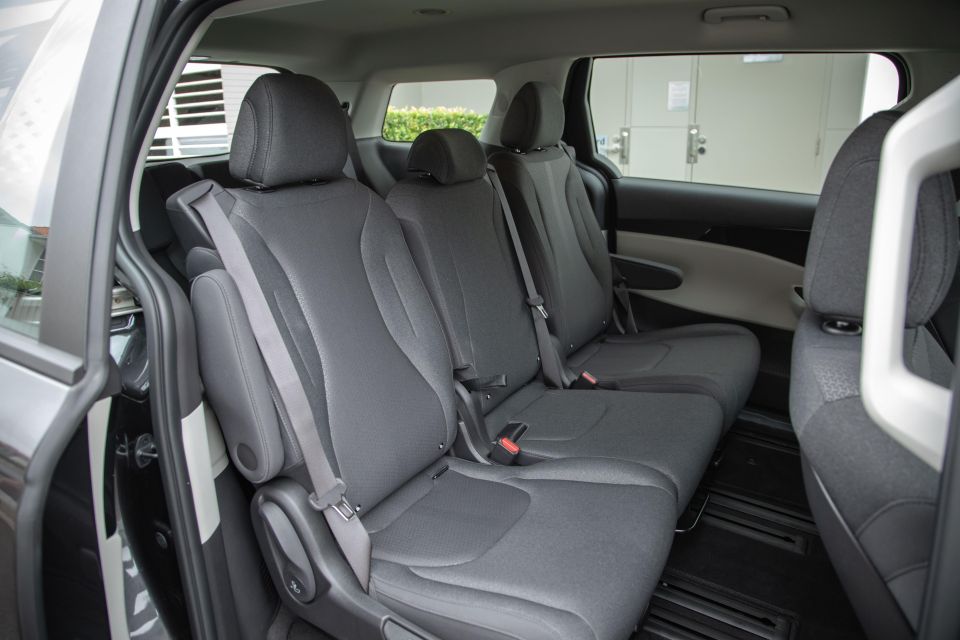
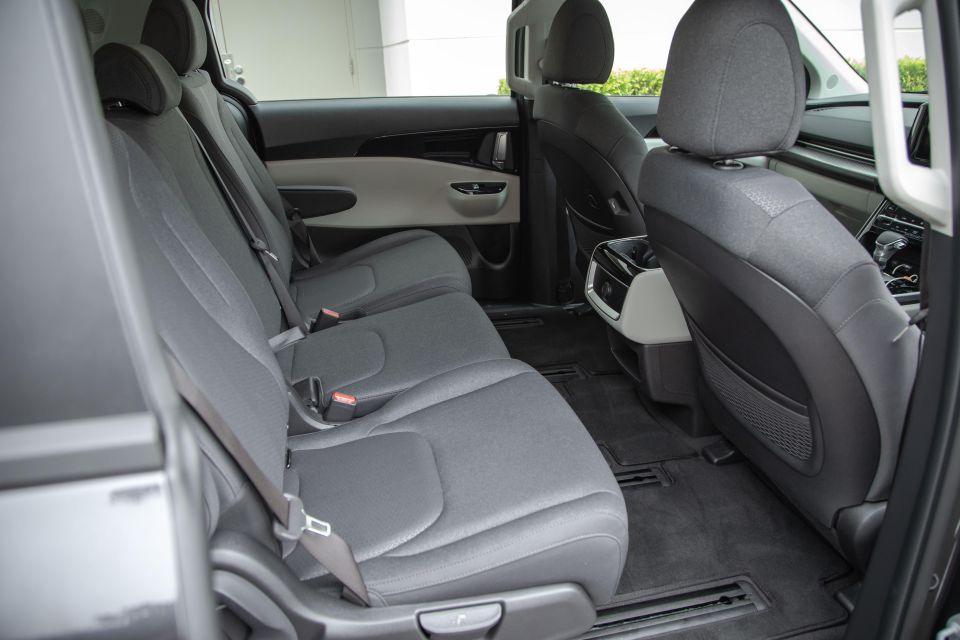
In-cabin features include a trio of USB ports, a large console bin and decent-sized bottle holders in the doors. It’s accommodating enough for those permanent oddment items that travel with large families and there’s plenty of handy storage for long trips.
Row two is quite clever. There’s a huge amount of fore-aft seat adjustment via seat rail functionality, and each position can be tuned to taste, including an enormous amount of legroom if treated as a five-seater.
There are USB ports on the inside edges of the front seats to prevent clumsy cable tangling, a central 12-volt connection and a pair of handy cupholders at the rear of the front arm rest.
Entry through the sliding doors is easy and the middle seating position can stow to create a handy table – presumably best served when the Carnival is stationary.

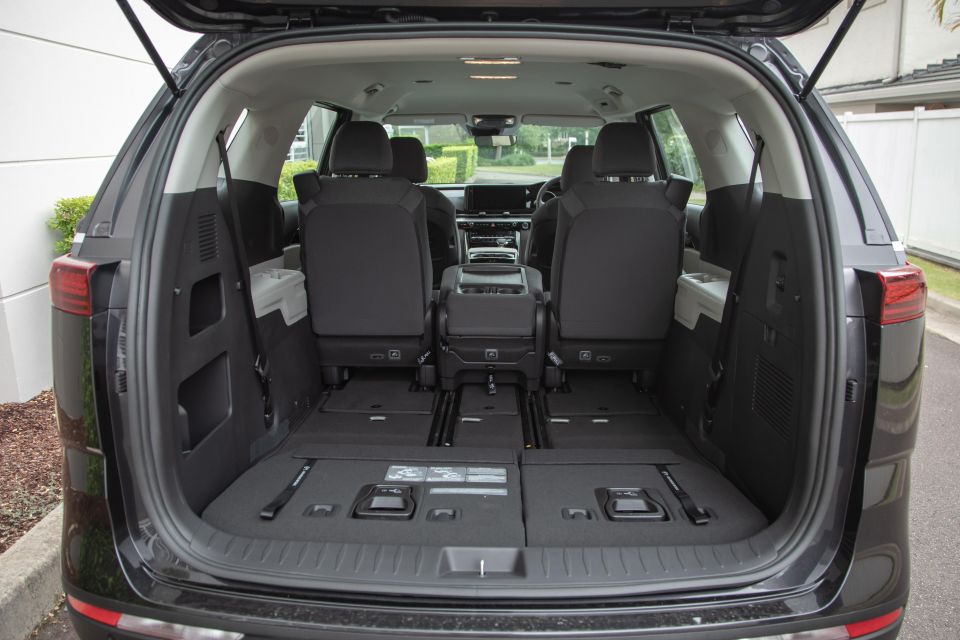

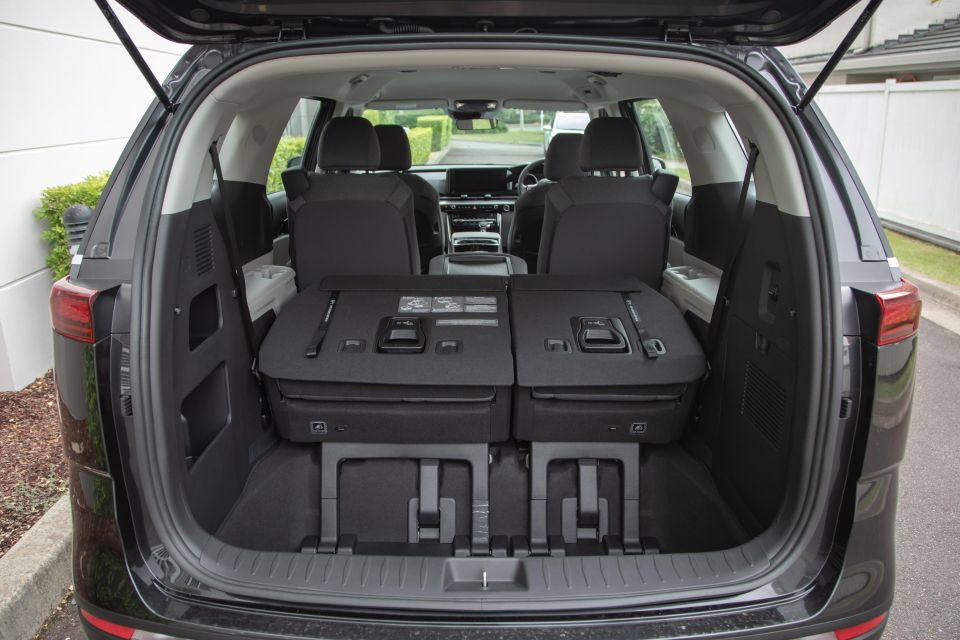
Row three comes complete with dual cupholders, and all seatbacks can be folded away nice and flat if the Carnival needs to convert into a surrogate delivery van for moving bulky furniture. You can even remove the centre seat section entirely if required.
Unlike the lion’s share of seven-seat SUVs, the Carnival’s third-row offers proper adult-oriented seating. There isn’t the degree of room-tuneable comfort as row two, though the sliding/tilting middle row does allow occupants to adjust for enough legroom across all seating to suit most fully occupied situations – most of the time. Third-row passengers are forced to share a sole 12-volt connection and there’s no USB device power.
Handily, the 60:40 split third row folds to create a completely flat (and very low) luggage space floor and it does this quickly and effortlessly. Even with all seats in play, the advertised boot space is a whopping 627 litres (VDA), with a veritable array of seat adjustment and folding/stowing to liberate, in extension, a positively huge 2785 litres. A space-saver spare is mounted under the floor of row two.
It’s very smartly packaged and hugely flexible in maximising passenger comfort as a priority. And as we discover, that extends through to how the Carnival behaves in the on-road experience…
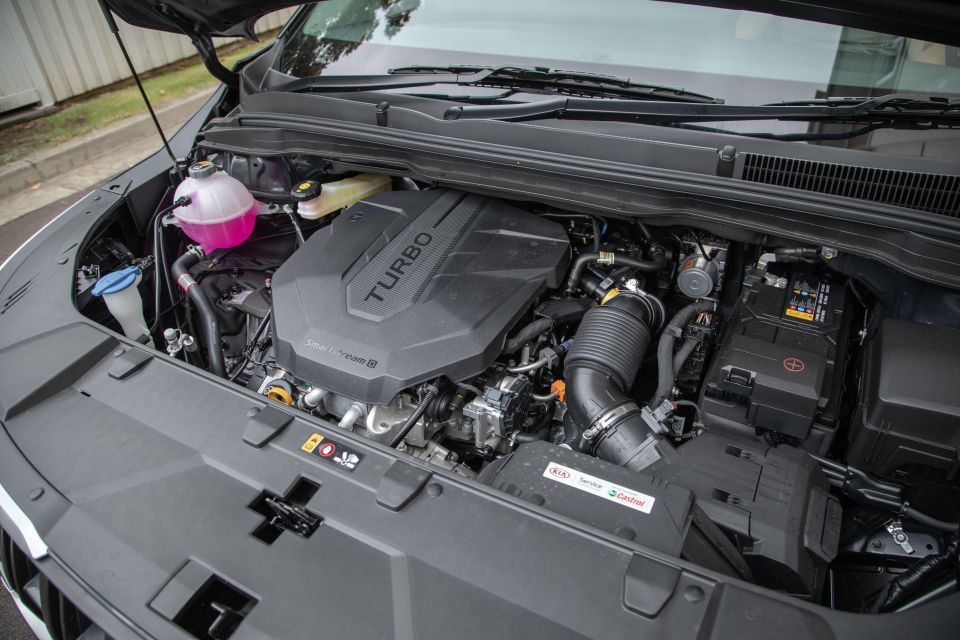
As mentioned, the Carnival line-up is available with petrol or the diesel power tested here, right throughout the range.
The engine is a 2.2-litre four-cylinder oiler, outputting 148kW (3800rpm) and 440Nm (1750-2750rpm). All variants in Australia drive the front wheels through a conventional eight-speed automatic transmission.
Opting for the petrol brings a more powerful 216kW (at a stratospheric 6000 RPM) 3.5-litre V6, albeit offering less peak torque than the diesel (355Nm) – the peak torque of the petrol also occurs at a far less useful 5000rpm. This makes the diesel’s low-down grunt far better suited to hauling the Carnival’s 2134kg weight around the suburbs on an everyday basis.
The oiler’s claimed fuel consumption is rated at just 6.5L/100km on the combined cycle for the diesel, which is excellent for a rig of its size. We saw an indicated 7.6L/100km during our week with testing across a variety of urban and interurban travel.

“I’m not driving that thing!” proclaimed my better half, who’s used to a manual Mark V Golf GTI with rock-hard suspension. “You’ll like,” I replied, without pause – there are so many reasons why it’s tough to pick where to start.
How about parking? Outward visibility is fantastic and despite the sense of internal space its external dimensions are easy to judge and its camera and sensor system is pretty handy.
If you’re ultimately deterred by Carnival’s size, you might well be surprised in the initial test drive. The big Kia is lot friendlier in tight spaces – such as tight inner-city laneways – than you might imagine.
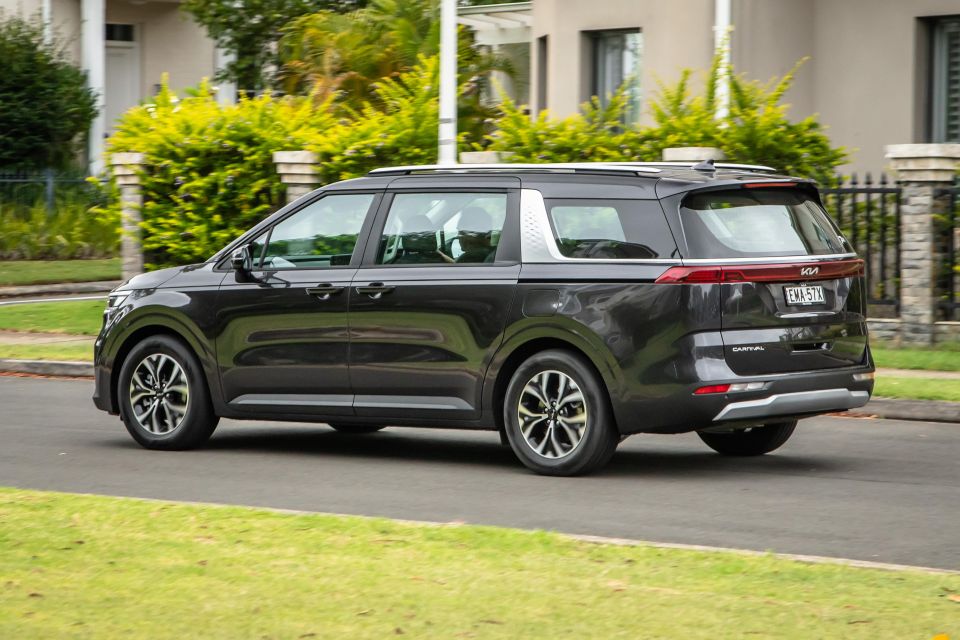
It doesn’t drive like a van or a bus. No, its underpinnings perform in very SUV-like way, if without woolliness and with more of a sheen of car-like connection. It’s planted, very cooperative and easy to wield.
The Carnival really does shine on the move. Part of it is the locally-tuned suspension’s ride quality, which is nicely cushioning while retaining discipline and chassis control.
But there’s also more depth to it than that. Because the suspension is whisper quiet, there’s virtually no hint of tyre or ambient noise. It isolates the worst of the road acne from penetrating into the cabin and it does so to a level that outdoes some premium European SUVs.
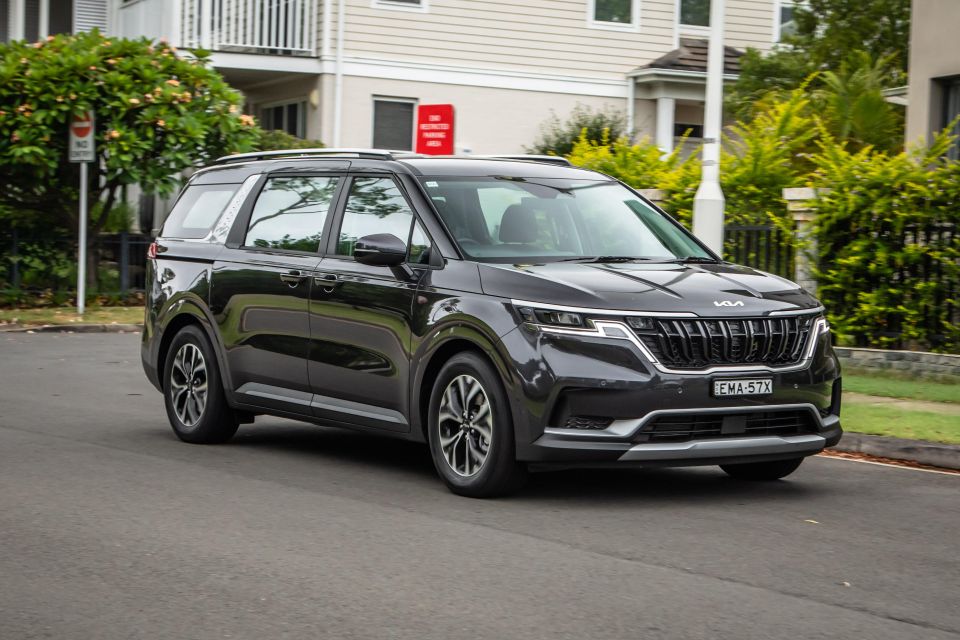
Then there’s the diesel engine. It’s a quiet cruiser while its polished and refined nature doesn’t break a sweat or suddenly develop the dreaded chatter under hard acceleration. If your only experience with diesel fours are dual-cab utes, prepare to be amazed.
Sure, it’s no rocket ship, but the diesel provides ample torque to remain quiet and dignified in the breadth of roles a large eight-seat rig ought to perform. That solid torque and unflustered manner pairs beautifully with the comforting ride to bring a genuinely luxurious cruising character that makes for a perfect long or short-hauler.
While the related Sorento (and Hyundai Santa Fe) fit quite decent eight-speed dual-clutch autos, the torque convertor transmission here really does fit the bill perfectly. It shifts seamlessly, plucking the oiler’s narrow-rpm sweet spot very nicely and, overall, the powertrain remains crisp and obedient enough not to want for drive mode-fiddling tomfoolery.
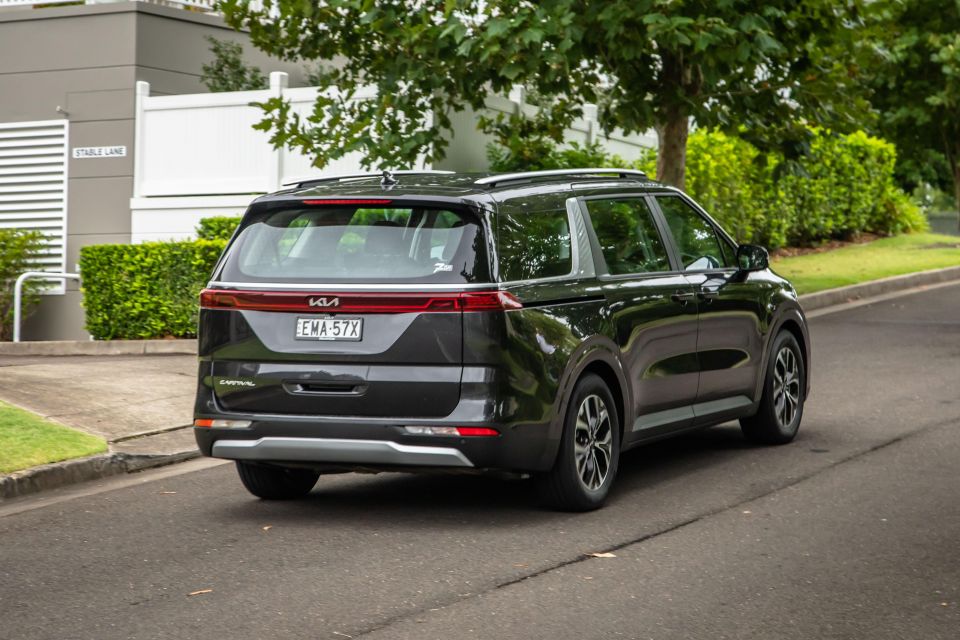
Where expert car reviews meet expert car buying – CarExpert gives you trusted advice, personalised service and real savings on your next new car.
Even the driving assistance systems, which can bring patchy and overbearing calibration in some Korean-made machinery, balanced helpful proactiveness with pleasing transparency.
The lane-keeping and following suite activate at high enough a threshold as to not intervene annoyingly at slower urban speeds and make for handy allies on the open road. Similarly, the adaptive cruise control isn’t prone to overcautiousness or too much concertina effect in fairly dense highway traffic.
All in all, the Carnival is a very nice, very pleasant place to spend seat time in, regardless of whether you’re making a quick school run or soaking up a long Aussie open-road.
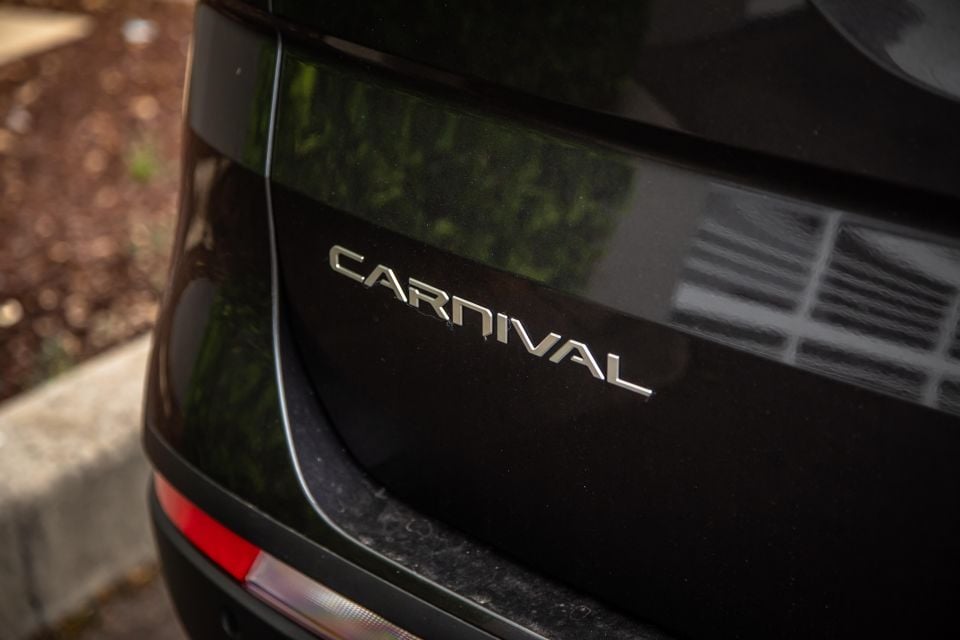
Kia’s seven-year, unlimited-kilometre warranty with capped-price servicing throughout remains an enticing ownership proposition.
There’s also up to eight years of roadside assistance if it remains serviced through a Kia authorised dealer.
Servicing is every 12 months or 15,000km. It’ll cost you $349, $610, $423, $798, $393, $777 and $417 for the first seven visits for diesel versions of Carnival, covering seven years and 105,000km. It’s a total outlay of $3767.
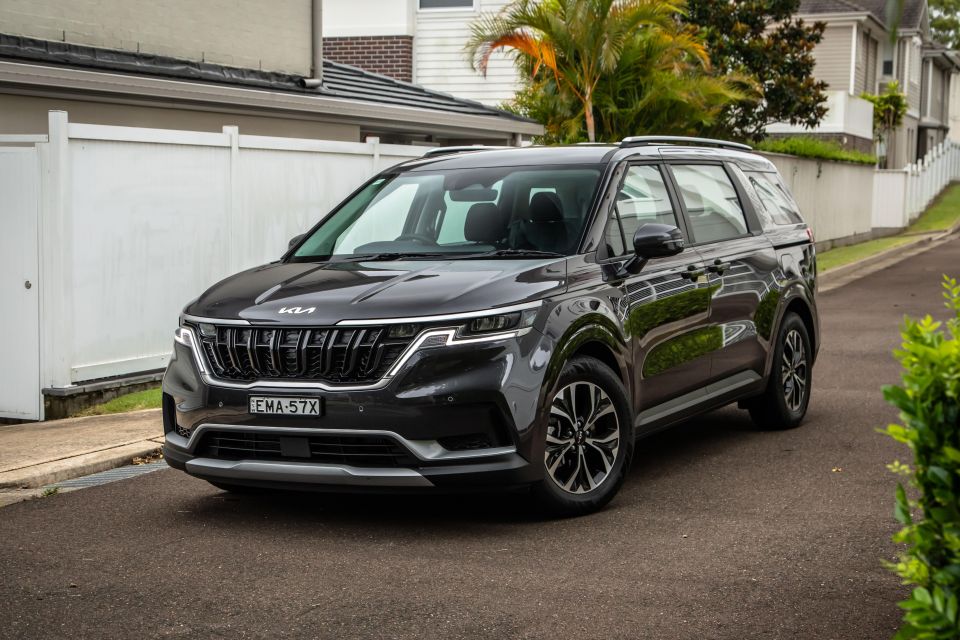
Strike me impressed. Not only does the Carnival Si seem to focus on delivering its best in the right areas, as a package it presents as an all-round quality machine then anchors its pitch with an exceptionally fine on-road experience.
Does it make for a good enough SUV substitute? It’s better than that. I wouldn’t recommend parting your hard-earned for any seven-seater without at least short-listing a Carnival, whichever variant your budget allows.
In reviewing the base S, we surmised the Si Diesel on test here really is the value pick of the litter, and I couldn’t agree more. The goodies that extra $5700 (on-road) investment demands pays dividends in the right areas and really solidifies the Si’s premium sheen.
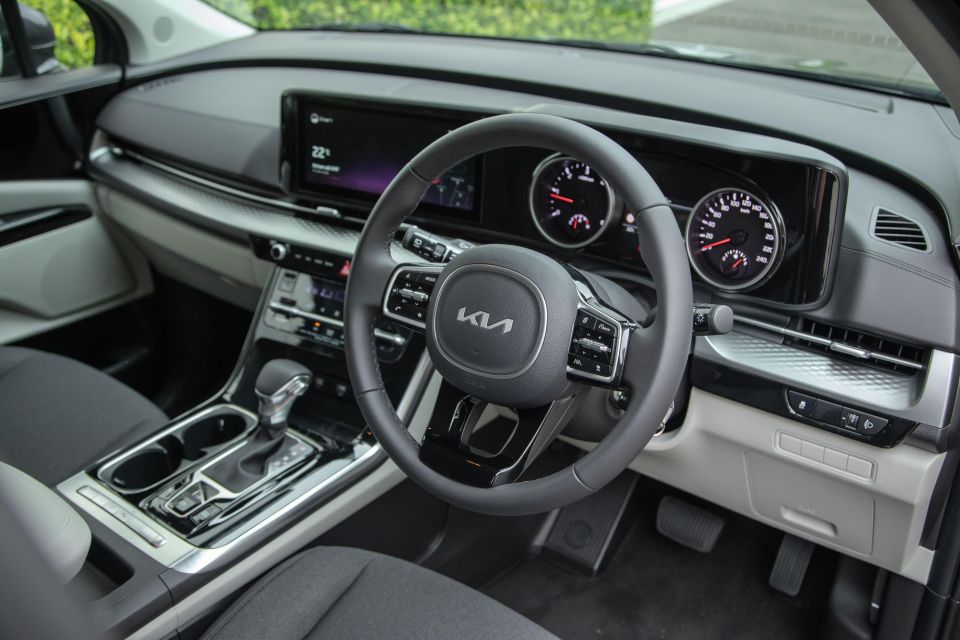
Click the images for the full gallery
MORE: Everything Kia Carnival
Where expert car reviews meet expert car buying – CarExpert gives you trusted advice, personalised service and real savings on your next new car.


Matt Campbell
5 Days Ago


James Wong
4 Days Ago


Max Davies
3 Days Ago


Josh Nevett
2 Days Ago


Josh Nevett
1 Day Ago


James Wong
16 Hours Ago